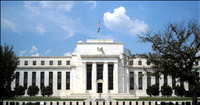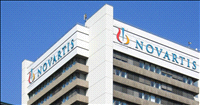Stem cell magic: one-shot treatment for bone injuries on anvil
07 Apr 2009
As stem cell research gathers momentum, doctors at the UK's Keele University have said they may soon be able to patch up damaged bones and joints anywhere in the body with a simple shot in the arm.
A team at the university is testing injectible stem cells that they say can be controlled with a magnet. Once injected, these immature cells can be guided to precisely where their help is needed and encouraged to grow new cartilage and bone, work on mice shows.
The aim is to treat patients with injuries and arthritis, the scientists told the UK National Stem Cell Network conference on Monday. The ultimate aim is to repair cartilage and bone.
Professor Alicia El Haj, working with professor John Dobson, says the technology, patented by biotechnology firm Magnecell, could be tested in humans within five years. It would provide a way to treat disease without invasive surgery or powerful drugs.
The injection would use the patient's own stem cells, harvested from their bone marrow. These mesenchymal cells would be treated in the lab to give them a coating of minute magnetic particles.
These same magnetic nanoparticles are already approved in the US, where they are routinely used as an agent to make MRI scans clearer to read. Targeted magnetic fields could then move the cells around the body to the desired place and switch them into action without the need for drugs or other biochemical triggers.
Al Haj said: "The ultimate aim is to repair cartilage and bone. We have been able to grow new bone in mice. Now we will look at whether we can repair damaged sites in goats. We should be able to move to human trials within five years."
Professor Jon Tobias of the Bone Research Society said: "Stem cells capable of regenerating diseased bones and joints can now been isolated and grown outside the body, but the difficulty is in getting them to exactly the right place.
"The technique developed by the team at Keele University, in which small magnetic particles are introduced into cells in the laboratory, represents an interesting approach to this problem, by raising the prospect of using magnets outside the body to manoeuvre cells into position."
Four patients treated
Meanwhile, experts at the University of Southampton, led by Professor Richard Oreffo, have treated four patients with hip joint problems using stem cell therapy. The technique combines the patient's own bone marrow stem cells with donor bone cells to patch-repair damaged bones that would otherwise need treatment with metal plates and pins.
They say it is only a matter of years before their method could be used routinely to treat some of the 60,000 people who fracture a hip in the UK each year.
Stem cell bank
Meanwhile, Australia's first dedicated stem cell bank is set to open in Melbourne in July and could be providing stem cells for medical and research purposes by the end of the year.
Located at the Bernard O'Brien Institute of Microsurgery, near St Vincent's Hospital in Fitzroy, the stem cell bank will be headed by Melbourne-born scientist Jeremy Crook, who was recruited from Singapore, where he headed the stem cell bank for 18 months.
The stem cell bank will create, source and store billions of adult stem cells for research and clinical use throughout Australia and overseas.
One of about six worldwide, the bank will not deal with embryonic stem cells - or the ethical minefield often associated with it. Instead, the bank will deal only with adult tissue-derived stem cells, which it will also use to generate a relatively new kind of cell called iPS, which can give rise to any fetal or adult cell type.
The main difference between embryonic and adult stem cells is that while embryonic stem cells can become any adult cell, adult stem cells can only become the organ specific cell in which they are found. For example, stem cells present in the skin can become only skin cells.
But scientists have achieved some success in making adult stem cells found in a specific organ, say fat, turn into another cell kind. But it is believed that adult stem cells would be far inferior to embryonic stem cells in their ability to become any other cell type.














.jpg)















